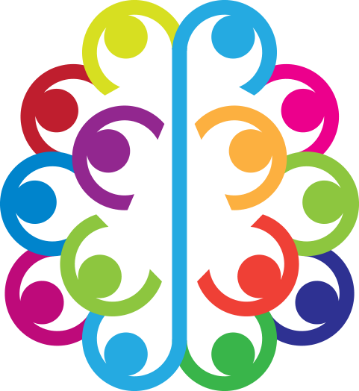Leverage Your Natural Brilliance
“Braincat is the most powerful way to extend mental capacity.”
WYNFORD DORE, FOUNDER & CEO, ZING PERFORMANCE
WYNFORD DORE, FOUNDER & CEO, ZING PERFORMANCE
See the 2-Minute New User Guide
To think well, we have to move our minds. We need to expand our thinking to include the largest scope of ideas and information. And we need to condense our thinking, so we can focus on the essentials.
This constant movement of expanding and condensing is the secret to mental mobility – and the essence of Braincat. It underlies the three simple steps of the Braincat process: INPUT, ORGANIZE, OUTPUT.

“I felt so empowered”
Brenda Ruby
Entrepreneur
In times of mental overload, it’s difficult to keep our minds open to lots of new ideas and information. We can easily narrow our thinking to protect ourselves.
So how can we keep expanding under pressure? We need a very relaxed approach.
This is the key to the INPUT stage of the Braincat process. The secret is to welcome everything just as it comes, in any order. Don’t organize information while it’s arriving. Don’t force new ideas into old structures. Let it all be: organization is a later step.
That way, you’ll welcome more information, ideas, and perspectives. And your mind will stay open.
A good question creates a mental vacuum – and nature abhors a vacuum. Simply ask! Your brain will go to work filling the gap you’ve opened.
That’s why Braincat provides a library of powerful questions to help you at the INPUT stage.
Just asking and answering questions rapidly expands your thinking. When you shift to organizing the answers, using the Braincat process, your clarity grows again.

The way to organize mental material is to categorize it, sorting the details under headings. Obvious? Yes, but there’s a magic to the process that’s easy to miss.
When you categorize in Braincat, you ask about each entry, “What kind of thing is this?” or “What is this a case of?” or “What bucket should I put this in?”
The process compels you to understand what you’re looking at – because you created the categories, not someone else.
By the time you’ve finished categorizing, you have extraordinary mastery of your material. Often, you can set the details aside and just focus on a handful of headings. The magic doesn’t happen in the software, it happens in your brain!

“I Stopped being stuck”
Gene Urban
Entertainer
The human mind is a storyteller: we think in sequences. That’s why we have Netflix. We always want to know, “What happens next?”
Sequencing your categories in Braincat makes you see how one thing is connected to another. You’re asking, “What’s more important than what?” or “What follows from what?” or “How should this flow?”
Again, it’s what happens in your own brain that creates the magic. With sequencing, you gain even more mastery over your material.
At the heart of every great project, solution, creation, or strategy, there’s one compelling thought – “the Big Idea.”
Once you’ve found and named your Big Idea, you have a powerful engine for future growth. You also have the key to communicating it to others so they can quickly understand.
Naming your Big Idea completes the ORGANIZE stage of the Braincat process. This last step gives you the ultimate mental command.

Braincat offers many ways to display your ideas and share them with others. You can choose between a classic outline and a mindmap. And you can export a CSV file for use in other programs. Additional ways to show your results will follow.
The TEAMS function allows you to share the Braincat process itself with your colleagues. Braincat is the most powerful tool for group brainstorming, because you have a way to gather ideas from many players – and you have a way to organize them, too.
Developing Braincat has involved a lot of neuroscience, to ensure it works the way your brain does. Three key factors are worth attention:

Creative thinking, or productive mental work of any kind, flourishes in an open and relaxed state. Information overload can crush this state, so you need a method to manage large inflows of ideas and data. This is why Braincat designs the INPUT stage to capture material just as it comes.

The human brain has vast capacity, but it has a bottleneck called “the working memory.” This is the cognative function that does your conscious thinking. However smart you are, you can only focus on 4 or 5 things at the same time. This is why Braincat helps you quickly condense large amounts of information to a few key ideas.

Conventional top-down thinking imposes a ready-made framework on incoming ideas and information. This has a constricting effect: you can literally miss what’s new. Emergent thinking allows the structure to emerge from the details. You discover the framework that’s hidden in the material. This is the magic of categorizing in Braincat.

Jon Ward explains how Braincat came about:
“They say, ‘necessity is the mother of invention’ and that’s how Braincat was born. Working as a marketer and branding consultant over several decades, I was compelled to absorb high loads of new ideas and information. And I had to quickly turn all that input into useful advice or effective copy.
I came to recognize the power of moving from complex to simple. I sometimes call it ‘many-to-one thinking’ because the goal is always better and better distillation. At the same time, I knew the value of being open to large volumes of input. I would say to my clients: ‘Tell me everything.’ And I meant it. I was unafraid to listen because I had a way to digest the material.
The most exciting discovery was how Braincat enriches thinking. Often, the greatest benefits of the process show up offline, contemplating the material after it’s been processed. This is the effect of a relaxed working memory. Our thoughts can quickly expand and condense, and our mental powers are released!”